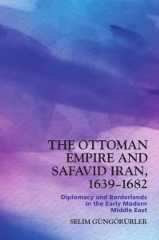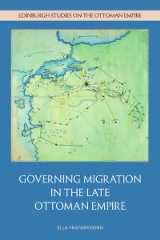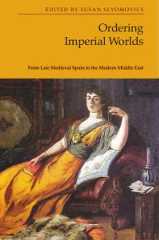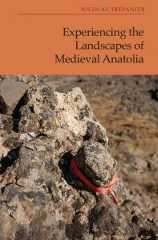The Archaeology of Afghanistan
From Earliest Times to the Timurid Period: New Edition
Edited byRaymond Allchin,Warwick Ball,Norman Hammond
Afghanistan is at the cultural crossroads of Asia, where the great civilisations of Mesopotamia and Iran, South Asia and Central Asia overlapped and sometimes conflicted. Its landscape embraces environments from the high mountains of the Hindu Kush to the Oxus basin and the great deserts of Sistan; trade routes from China to the Mediterranean, and from Central Asia to the Arabian Sea cross the country. It has seen the development of early agriculture, the spread of Bronze Age civilisation of Central Asia, the conquests of the Persians and of Alexander of Macedon, the spread of Buddhism and then Islam, and the empires of the Kushans, Ghaznavids, Ghurids and Timurids centred there, with ramifications across southern Asia. All of which has resulted in some of the most important, diverse and spectacular historical remains in Asia.
First published in 1978, this was the first book in English to provide a complete survey of the immensely rich archaeological remains of Afghanistan. The contributors, all acknowledged scholars in their field, have worked in the country, on projects ranging from prehistoric surveys to the study of Islamic architecture. It has now been thoroughly revised and brought up to date to incorporate the latest discoveries and research.
About the editors:Original edition edited by Raymond Allchin and Norman Hammond
Revised and updated edition edited by Warwick Ball with Norman Hammond
New to this edition:- New interpretation of the Afghan Bronze Age within the broader context of the recently identified Oxus and Helmand Civilisations
- Reports on excavations completed after the first edition, such as Shortughaï and Kandahar
- Excavations revealing Achaemenid, Greek and Kushan discoveries at and near Balkh, Achaemenid levels at Herat, and spectacular Buddhist remains at Kabul and Mes Aynak
- Revised discussions of Graeco-Bactrian and Kushan coinage
- Major revisions of Kushan and later pre-Islamic history based on the recent discovery of the Rabatak Bactrian inscription and the Bactrian documents
- Other major discoveries such as the Greek Sophytos inscription from Kandahar, the Sasanian cave painting at Ghulbiyan, the Sasanian rock relief at Rag-i Bibi, and many others
- Important early Islamic urban remains revealed at the Minaret of Jam with extensive related fortifications systems extending over a vast area
- Extended bibliography with almost twice the number of new titles
- Nearly 500 illustrations, nearly all new and mostly in colour
- Raymond Allchin (1923-2010), formerly University of Cambridge
- Warwick Ball, Near Eastern archaeologist
- Olivier Bordeaux, Délégation Archéologique Française en Afghanistan (DAFA)
- Sophia Bowlby, Loughborough University
- Richard S. Davies, Bryn Mawr College, Pennsylvania
- Klaus Fischer (1919-1993) formerly University of Bonn
- Henri-Paul Francfort, Centre Nationale de Recherche Scientifique
- Simon Glenn, University of Oxford
- Norman Hammond, University of Cambridge and Boston University
- Bertille Lyonnet, Directrice de Recherche Emerita at the CNRS, Paris
- David W. Mac Dowall (FSA 1960) University College, Durham and University of North London
- Cameron A. Petrie, University of Cambridge
- Jim G. Shaffer, Case Western Reserve University, Cleveland
- Nicholas Sims-Williams, SOAS, University of London
- Maurizio Taddei (1936-2000) formerly Istituto Universitario Orientale, Naples
- Kevin White, University of Reading
Notes on Contributors
List of Illustrations
Acknowledgements
Foreword,Mohammad Fahim Rahimi,Kabul Museum
Preface,Norman Hammond
Introduction to the first edition,Norman Hammond and Raymond Allchin
Introduction to the new edition,Warwick Ball
1. The Geographical Background,Sophia R. Bowlby and Kevin H. White
2. The Palaeolithic,Richard S. Davies
3. The development of the Oxus Civilisation north of the Hindu Kush,Henri-Paul Francfort, Bertille Lyonnet, Cameron Petrie and Jim G. Shaffer
4. The development of a ‘Helmand Civilisation’ south of the Hindu Kush,Jim G. Shaffer and Cameron Petrie
5. The Iron Age, Achaemenid and Hellenistic periods,Warwick Ball, Simon Glenn, Bertille Lyonnet, David W. Mac Dowall and Maurizio Taddei
6. From the Kushans to the Shahis,Warwick Ball, Olivier Bordeaux, David W. Mac Dowall, Nicholas Sims-Williams and Maurizio Taddei
7. From the Rise of Islam to the Mongol Invasion,Warwick Ball and Klaus Fischer
8. From the Mongols to the Mughals,Warwick Ball and Klaus Fischer
9. Conclusion,Raymond Allchin and Norman Hammond
Bibliography
[T]heArchaeology of Afghanistanprovides [an] invaluable survey of the state of current knowledge of the various periods, both in Afghanistan and the surrounding regions. [It] ranges freely across adjacent regions to provide an overview of changing alliances with the three adjacent major civilizations. It was not only dynasties that changed with alarming frequency, but also the religions promoted by them. Both Buddhism and Islam, had a major impact on the art, culture and architecture of this mountainous country. [The book] shed[s] a brilliant light on the archaeology of Afghanistan.... will be treasured as an impressive and remarkable record of the present state of knowledge... a major achievement.
In summary, I found this book to be extremely useful with important new chronologies and data on ancient and historical Afghanistan. It helps confirm the importance of this region to the history of Asia and the world as a whole. Overall the volume is extremely well written and edited, and has the most up to date information available at the time of publication. [... A]n essential reference volume for many years to come.
This comprehensive reworking of the original 1978 book, revised with sovereign assurance by Warwick Ball, one of the greatest living specialists on Afghan archaeology, with the assistance of Norman Hammond, summarises post-1978 research from Palaeolithic to Mughal times. With ten specialist contributions plus dozens of new drawings and colour plates, this is the book of books on Afghanistan’s material culture.
Warwick Ball is a Near Eastern archaeologist and author who spent over twenty years carrying out excavations, architectural studies and monumental restoration throughout the Middle East and adjacent regions. Over the past fifty years he has lived, worked and travelled in most countries between Europe and China covered by this book, in particular in remote parts of Inner Asia. He has excavated in Iran, Libya, Ethiopia, Afghanistan (where he was Acting Director of the British Institute of Afghan Studies), Jordan, and Iraq (where he was Director of Excavations with the British School of Archaeology in Iraq). For five years he was founder, editor and Editor-in-Chief ofAfghanistan, the journal of the American Institute of Afghanistan Studies published by Edinburgh University Press. He has written widely on the history and archaeology of the region, includingSyria: An Architectural and Historical Guide (3rd edition 2006) andThe Monuments of Afghanistan: History, Archaeology, Architecture (2008). Two major academic books, theArchaeological Gazetteer of Afghanistan (Oxford University Press) andThe Archaeology of Afghanistan (Edinburgh University Press) were published in 2019. In 2020, the University of St Andrews confirmed they would be offering the honorary degree of Doctor of Letters on the author in recognition of his work in Near Eastern archaeology.
Professor Norman Hammond is a Senior Fellow at the McDonald Institute for Archaeological Research at Cambridge University. He was founding editor ofSouth Asian Archaeology and ofAfghan Studies.
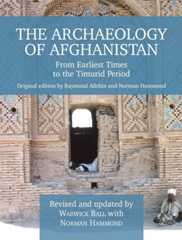
- 276 mm x 216mm
- 752 pages
- 36 black and white illustrations, 353 colour illustrations, 128 black and white line art
- Published May 2019 (Hardback)
- ISBN
- Hardback: 9780748699179
- Ebook (app): 9781474450461
- Ebook (PDF): 9781474450478
You might also like ...

Open Access





